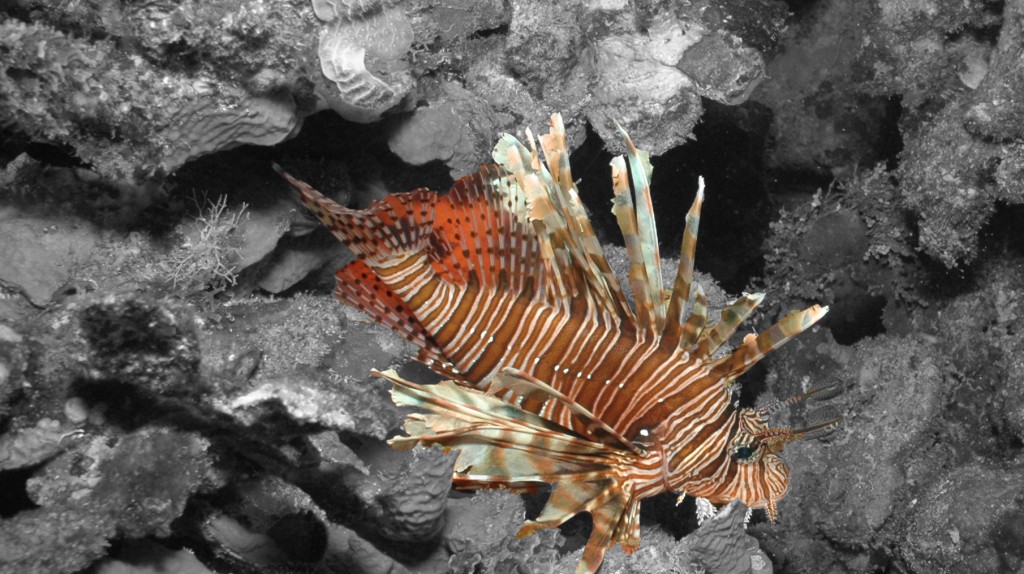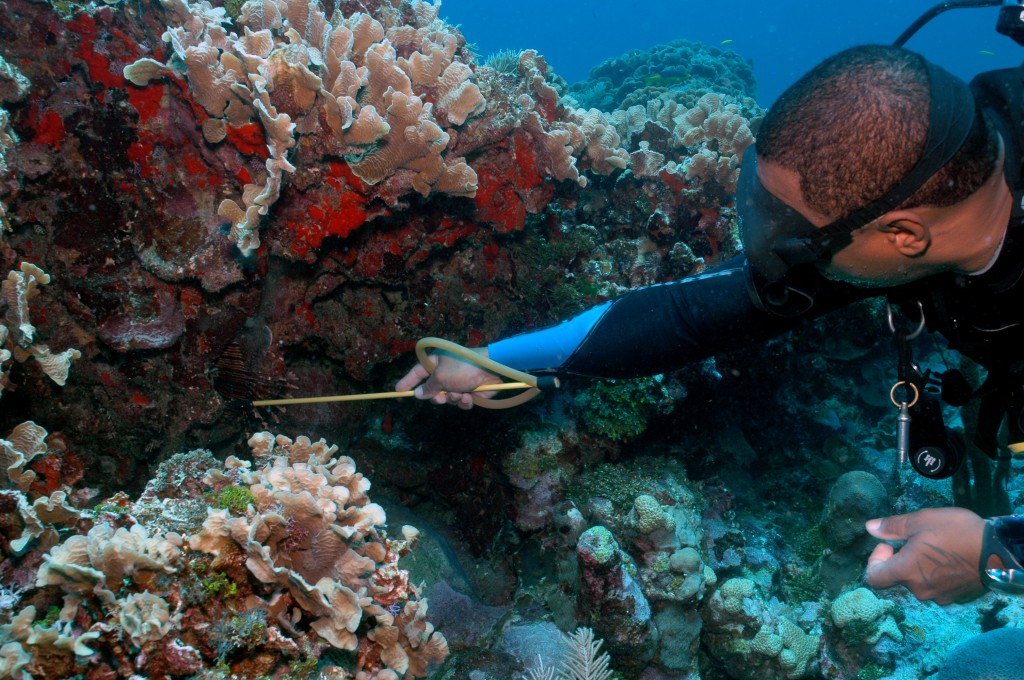By Andy Veal, Blue Ventures expedition volunteer, Belize
After our first week of marine science classes in the beautiful fishing village of Sarteneja, myself and my fellow expedition volunteers were excited to finally make it to the Bacalar Chico Dive Camp and get stuck in with the hands-on part of our expedition. Our first three weeks of diving were spent gathering important coral and fish data, and by the fourth week we were set for a new challenge…

The lionfish is a invasive species in the Caribbean and is devastating local fish populations
On almost every one of our dives, a lionfish would be spotted. Lionfish are thought to have been accidentally released into the Caribbean from an aquarium in North America. Despite their strange beauty, from a very early point in the expedition we learned about the damage that this species is wreaking on the local reef. Blue Ventures’ lionfish research is therefore designed not only to monitor the lionfish population itself, but also their food competitors and potential predators. Still a topic of some debate, it is thought that some of the larger marine species could develop an appetite for this rather sedentary species.
The surveys had three main parts: lionfish searches, lionfish surveys, and moray eel / lobster surveys. Lionfish searches involved laying a 200m² area and spending twenty minutes searching for and recording any lionfish sightings. This proved to be extremely successful, and after a few enjoyable dives searching over reefs and under various cracks and crevices, the only mild frustration was too often finding lionfish swimming tantalisingly close to the survey areas with none inside the actual boundaries!

Searching for lionfish (photo credit: Annelise Hagan)
The next to be tackled were the lionfish surveys to look for potential predators and competitors, accompanied by moray eel / lobster surveys, as moray eels are considered a potential lionfish predator, while lobster are one of the lionfish’s main food and space competitors. A particularly enjoyable aspect of the moray eel / lobster belt transects was the concept of “lobster tickling”. Far from pinning a lobster down and terrorising it with a feather duster, this was in fact the practice of measuring lobsters with a glorified plastic stick. Our initial attempts resulted in varying degrees of success, with the most frequent outcome being a hasty retreat by the confused lobster back into its hole. Another attempt involved approaching the lobster from both ends, one ‘encouraging’ it out of the crack, with the other lying in wait at the other end with the tickling stick.
Having a chance to watch a couple of lionfish culls was a terrific way to round off the final week. The subsequent dissections, measurements and analysis of the deceased lionfish (including their prey) not only formed yet another part of Blue Ventures’ research, but also provided for the delicious lionfish pizza later that evening. Over the course of the expedition, we were able to collect a large amount of lionfish data that will undoubtedly help with understanding and controlling this invasive species.
Find out more about Blue Ventures’ volunteer expeditions and lionfish work in Belize.

